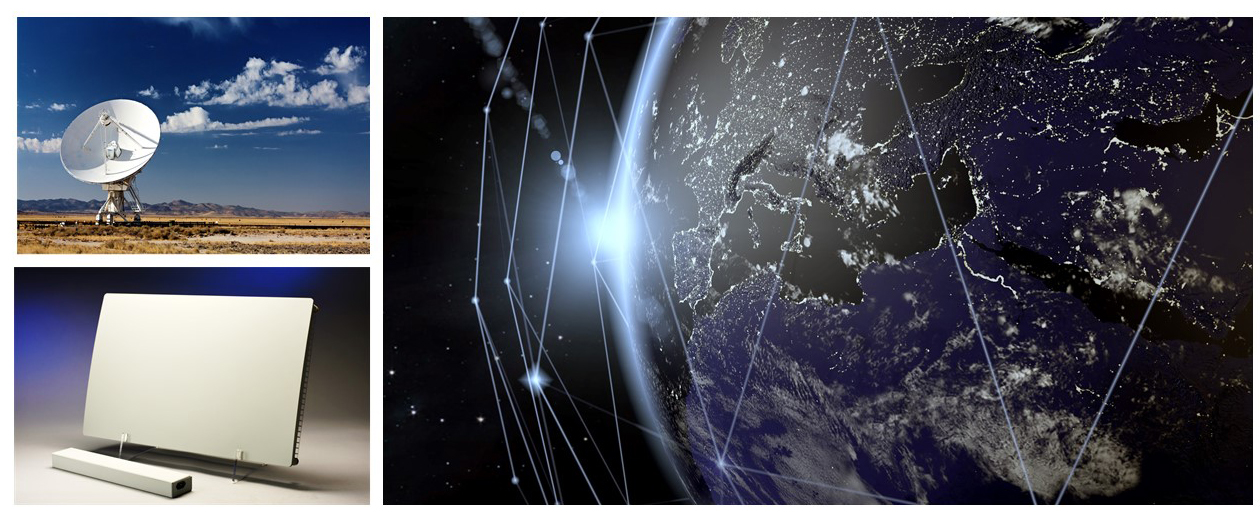Space represents the next frontier for cloud computing, and Microsoft’s unique approach to partnerships with pioneering companies in the space industry means together we can build platforms and tools that foster significant leaps forward, helping us gain deeper insights from the data gleaned from space.
One of the primary challenges for this industry is the sheer amount of data available from satellites and the infrastructure required to bring this data to ground, analyze the data and then transport it to where it’s needed. With almost 3,000 new satellites forecast to launch by 20261 and a threefold increase in the number of small satellite launches per year, the magnitude of this challenge is growing rapidly.
Essentially, this is the ultimate intelligent edge scenario – where massive amounts of data must be processed at the edge – whether that edge is in space or on the ground. Then the data can be directed to where it’s needed for further analytics or combined with other data sources to make connections that simply weren’t possible before.
DIU chooses Microsoft and Ball Aerospace for space analytics
To help with these challenges, the Defense Innovation Unit (DIU) just selected Microsoft and Ball Aerospace to build a solution demonstrating agile cloud processing capabilities in support of the U.S. Air Force’s Commercially Augmented Space Inter Networked Operations (CASINO) project.
With the aim of making satellite data more actionable more quickly, Ball Aerospace and Microsoft teamed up to answer the question: “what would it take to completely transform what a ground station looks like, and downlink that data directly to the cloud?”
The solution involves placing electronically steered flat panel antennas on the roof of a Microsoft datacenter. These phased array antennas don’t require much power and need only a couple of square meters of roof space. This innovation can connect multiple low earth orbit (LEO) satellites with a single antenna aperture, significantly accelerating the delivery rate of data from satellite to end user with data piped directly into Microsoft Azure from the rooftop array.
Analytics for a massive confluence of data
Azure provides the foundational engine for Ball Aerospace algorithms in this project, processing worldwide data streams from up to 20 satellites. With the data now in Azure, customers can direct that data to where it best serves the mission need, whether that’s moving it to Azure Government to meet compliance requirements such as ITAR or combining it with data from other sources, such as weather and radar maps, to gain more meaningful insights.
In working with Microsoft, Steve Smith, Vice President and General Manager, Systems Engineering Solutions at Ball Aerospace called this type of data processing system, which leverages Ball phased array technology and imagery exploitation algorithms in Azure, “flexible and scalable – designed to support additional satellites and processing capabilities. This type of data processing in the cloud provides actionable, relevant information quickly and more cost-effectively to the end user.”
With Azure, customers gain its advanced analytics capabilities such as Azure Machine Learning and Azure AI. This enables end users to build models and make predictions based on a confluence of data coming from multiple sources, including multiple concurrent satellite feeds. Customers can also harness Microsoft’s global fiber network to rapidly deliver the data to where it’s needed using services such as ExpressRoute and ExpressRoute Global Reach. In addition, ExpressRoute now enables customers to ingest satellite data from several new connectivity partners to address the challenges of operating in remote locations.
For tactical units in the field, this technology can be replicated to bring information to where it’s needed, even in disconnected scenarios. As an example, phased array antennas mounted to a mobile unit can pipe data directly into a tactical datacenter or Data Box Edge appliance, delivering unprecedented situational awareness in remote locations.
A similar approach can be used for commercial applications, including geological exploration and environmental monitoring in disconnected or intermittently connected scenarios. Ball Aerospace specializes in weather satellites, and now customers can more quickly get that data down and combine it with locally sourced data in Azure, whether for agricultural, ecological, or disaster response scenarios.
This partnership with Ball Aerospace enables us to bring satellite data to ground and cloud faster than ever, leapfrogging other solutions on the market. Our joint innovation in direct satellite-to-cloud communication and accelerated data processing provides the Department of Defense, including the Air Force, with entirely new capabilities to explore as they continue to advance their mission.

